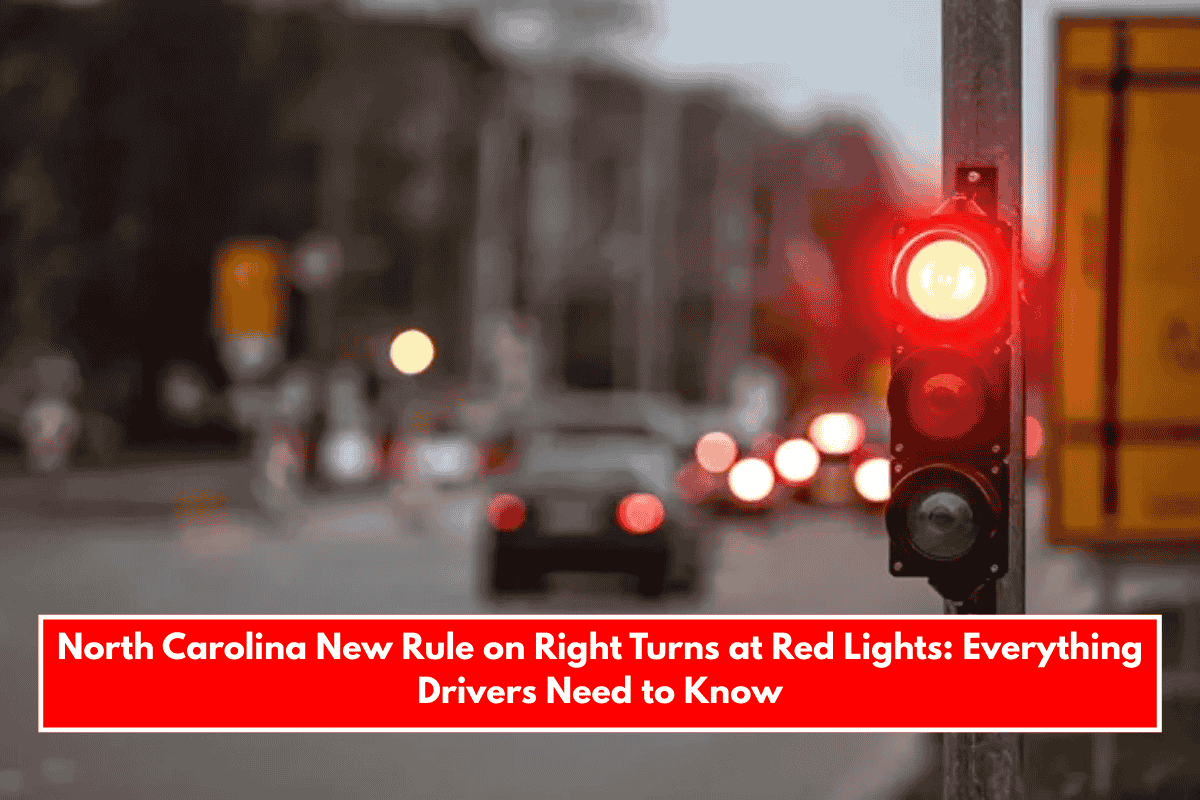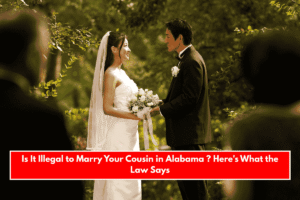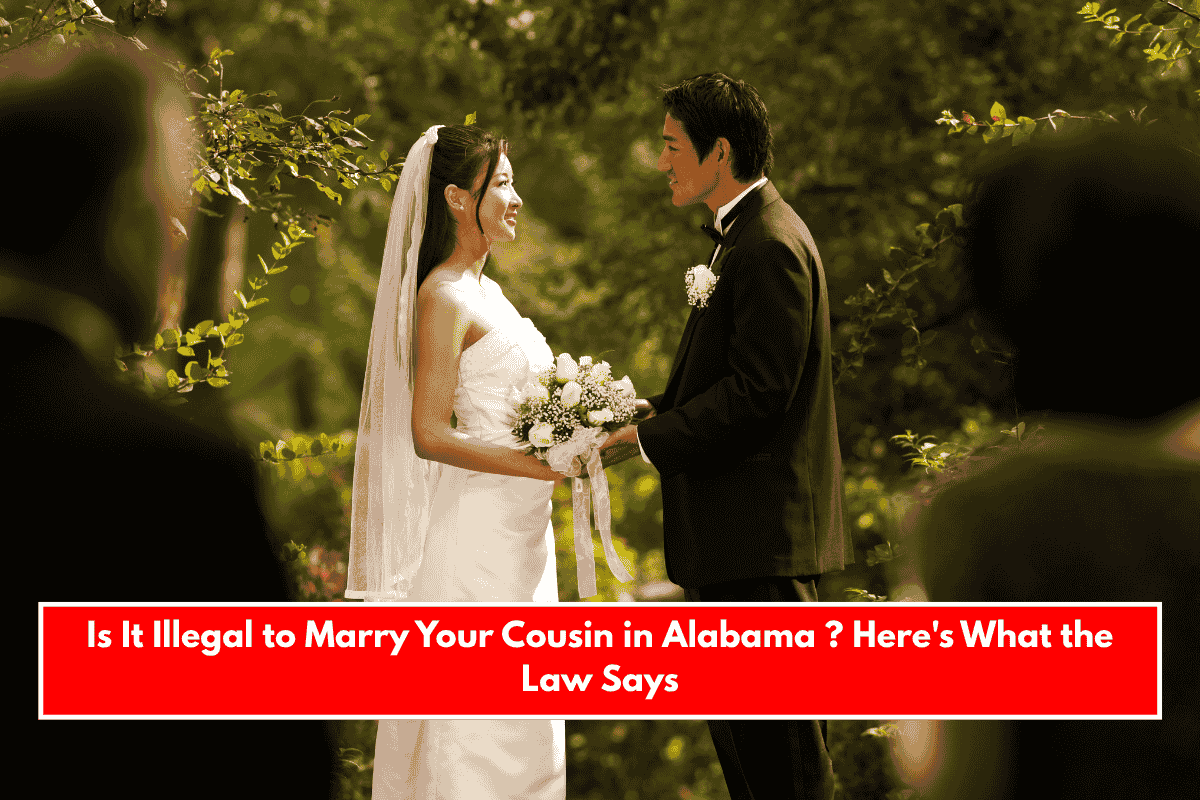North Carolina’s right-turn-on-red (RTOR) law is a crucial part of the state’s traffic regulations. Recent discussions and updates have clarified the rules, exceptions, penalties, and safety concerns surrounding this common driving maneuver. Here’s a comprehensive guide to what drivers need to know in 2025.
General Rule: Right Turn on Red Permitted
- In most intersections across North Carolina, drivers are allowed to make a right turn at a red light after coming to a complete stop.
- Before turning, drivers must yield to all pedestrians and oncoming traffic. The intersection must be clear of vehicles, cyclists, and pedestrians before proceeding.
- This rule applies unless there is a posted sign explicitly prohibiting a right turn on red at that intersection.
Key Steps for a Legal Right Turn on Red
- Come to a Complete Stop: Stop at the marked stop line, before entering the crosswalk, or before entering the intersection if there is no line.
- Yield Right-of-Way: Look for pedestrians in the crosswalk and oncoming vehicles. Yield to anyone who has the right-of-way.
- Check for Prohibitive Signs: If a sign says “No Turn on Red,” you must wait for the green light.
- Proceed with Caution: Only turn when the way is completely clear. Defensive driving is recommended-look left, right, and left again before moving.
Important Exceptions and Updates
- Red Arrows: North Carolina law prohibits right turns on a red arrow. This rule was updated in 2012, but many drivers remain unaware. Turning right on a red arrow can result in a ticket, even if the intersection would otherwise allow a right turn on a solid red light.
- Special Intersections: Some intersections, especially near schools or with heavy pedestrian traffic, may have additional restrictions or posted signs banning right turns on red.
- Flashing Red Lights: A flashing red light is treated like a stop sign. You must stop and yield, but standard RTOR rules still apply unless otherwise posted.
Penalties for Violations
- Running a Red Light: If you turn right on red without stopping, or where it is prohibited, you can receive a civil infraction. This typically results in a $50 fine, but does not add points to your license or affect your insurance.
- Failure to Yield: Not yielding to pedestrians or oncoming traffic can result in more serious penalties, including fines, demerit points, and liability for any injuries caused.
- Right Turn on Red Arrow: Violating the red arrow restriction can also result in a citation and fine.
Safety Considerations and Trends
- Growing Restrictions: While North Carolina still allows RTOR in most places, some cities nationwide are considering bans or additional restrictions due to increased pedestrian and cyclist accidents. Larger vehicles like SUVs and pickups are especially risky due to bigger blind spots.
- Defensive Driving: Always scan your surroundings, move slowly into the intersection, and be prepared to stop if conditions change suddenly.
Common Misconceptions
- RTOR Is Not Always Allowed: Many drivers mistakenly believe you can always turn right on red. This is only true if there are no prohibitive signs and all safety conditions are met.
- Flashing Red ≠ RTOR: A flashing red is not a green light for RTOR; it requires a full stop and yielding, just like a stop sign.
Right Turn on Red in North Carolina
| Rule/Condition | Requirement/Restriction |
|---|---|
| Complete Stop | Mandatory before turning |
| Yield to Pedestrians/Vehicles | Always required |
| Signs Prohibiting RTOR | Must obey; no turn allowed |
| Red Arrow | No right turn allowed on red arrow |
| Penalty for Violation | $50 fine (no license points), higher for failure to yield |
| Defensive Driving | Strongly recommended for safety |
North Carolina permits right turns on red at most intersections after a complete stop, provided you yield to all pedestrians and vehicles and there is no sign prohibiting the maneuver. Turning right on a red arrow remains illegal. Always check for signs, follow right-of-way rules, and drive defensively to ensure safety and compliance with the law.
Sources:
- https://www.cottenfirm.com/blog/2024/05/what-exactly-is-running-a-red-light-in-north-carolina/
- https://www.protectyourlegalrights.com/blog/what-to-know-about-turning-right-on-a-red-light/
- https://www.charlotteinjurylawyersblog.com/is-it-legal-to-turn-right-on-red-in-north-carolina/
- https://drifttravel.com/a-guide-to-north-carolinas-right-turn-on-red-law/
- https://www.protectyourlegalrights.com/blog/can-you-turn-right-on-red-in-north-carolina/
North Carolina Driving Laws
| Parking on highways | Parking on highways is prohibited. |
| Headlights | Motorists must use headlights from sunset to sunrise; when light conditions restrict visibility to 400 feet or less; or when using windshield wipers during inclement weather. |
| Right turns on red | Right turns at a red light are permitted after a complete stop unless otherwise posted. Left turns on red are not permitted. |
| Traffic accidents | Crashes involving death, personal injury, or property damage of $1,000 or more must be reported to the nearest law enforcement officer or agency.Failure to report could result in prosecution and/or driver license suspension. |
| Fender Bender Law | Motorists must move their vehicle to the shoulder of the road following minor, non-injury wrecks to help keep traffic moving and reduce the likelihood of secondary wrecks. Failure to do so could result in a $110 fine and court costs. |
| Move Over Law | This law requires motorists to move over a lane or slow down considerably when approaching emergency vehicles (including NCDOT vehicles) stopped on the side of the road with lights flashing. Failure to do so could result in a $250 fine, and violators could also face misdemeanor or felony charges, if someone is injured or property is damaged. |
| Quick Clearance Law | If a law enforcement officer and an NCDOT representative concur, a parked, standing or disabled vehicle can be moved off the roadway by any means necessary if it poses a safety concern. |
| Littering | Disposing of litter on public or private property, except by an individual who owns the property, is illegal. Violators could face a fine of up to $200 and community service. Related:Litter Prevention & ManagementSwat-a-Litterbug |
| Cellphone use | Drivers under 18 are prohibited from using a mobile phone or technology associated with a mobile phone while driving except in emergencies or when talking to a parent or spouse. Violators pay a $25 fine but receive no driver license points, insurance surcharge or court costs. |
| Texting | Drivers are prohibited from reading or writing text messages or emails while the vehicle is moving. Violators are subject to a $100 fine and court costs. |
| Helmet law | Helmets meeting federal standards are required when riding a motorcycle or moped. Children under 16 must wear a helmet while riding a bicycle.Related:Motorcycle Helmet RequirementsBikeSafe North Carolina |
| Seat belts and safety seats | All occupants of a vehicle must wear a seat belt. Front-seat passengers who violate the law are fined $25. Back-seat passengers are fined $10. Children under age 8 who weigh less than 80 pounds must be secured in a safety seat while riding in a vehicle. Older children must transition to booster seats before graduating to an adult safety belt.Drivers who fail to properly secure children face $125 in fines and court costs, as well as a two-point penalty on their driving record.Related:BuckleUpNC.orgChild Passenger SafetySafeCar.gov |
| Driving while impaired | Drivers with a blood alcohol concentration at or greater than 0.08 percent are charged with driving while impaired. The minimum punishment is a fine of up to $200 and a possible term of imprisonment ranging from 24 hours to 30 days. The maximum punishment is a fine of up to $4,000 and a possible term of imprisonment ranging from 30 days to two years. |
| License suspension | Drivers convicted of driving while impaired will have their licenses suspended by the N.C. Division of Motor Vehicles for at least one year. Individuals with a prior DWI conviction may be subject to punishment as a felon, and their vehicles may be seized and sold. Related:DWI License Suspensions & Revocations |














I have lived in many states across the USA.. North Carolina is the worst place I have ever lived…I have no tolerence for the behaviors of the residents here ..so much so ..that after just a few years here…I am moving out of North Carolina…the problem with North Carolina is the fact there are just too many stupid people here… exhibiting too many stupid behaviors …people who just don’t care and those do as they please regardless of what the rules are!
Another traffic issue in North Carolina …Speeding… is out of control here!! Extreme defensive driving is a necessity. Driving in North Carolina is very dangerous! With the vast growth of more and more people here…things will only continue to get worse!
Agreed with your points C Beri